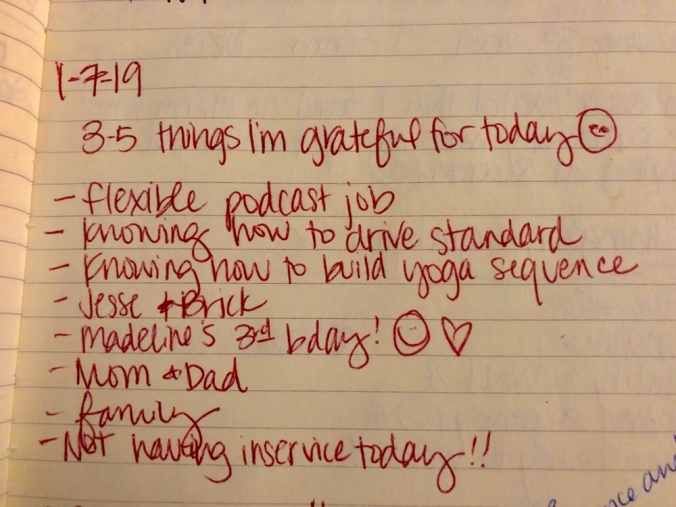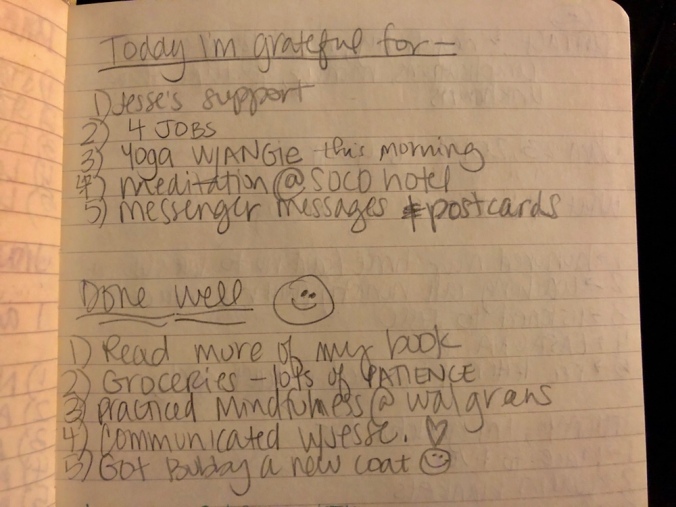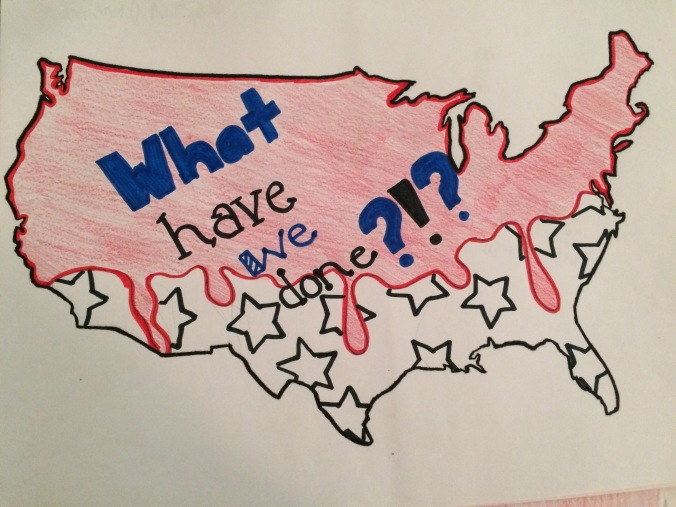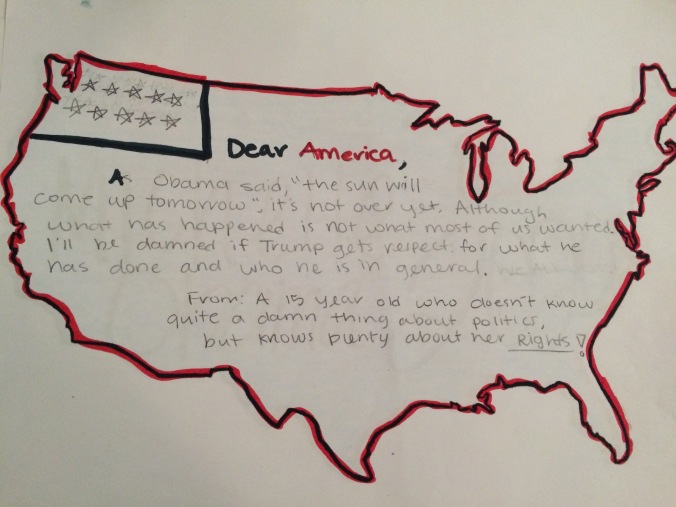Death may be a part of life, but that doesn’t make dealing with it any easier for most. This past summer, my partner Jesse and I celebrated our 8 year anniversary. This past summer, my partner Jesse also found out his mom Martha has spinal cancer.
It was the last day in June, and I remember attending a friend’s wedding celebration after learning about her initial diagnosis and thinking how weird it felt to celebrate the beginning of a new journey while a loved one’s journey might soon be ending. I remember looking for the color red at the dinner party and taking a mindful pause each time I saw it, reminding myself to stay present and allow myself to be happy for our friends. I knew then that the next few months would be filled with similar moments of trying to find a balance between joy and sorrow, but I was unsure of what exactly that would mean.
I’ve been fortunate to never experience this predicament, so it’s left me asking the same questions again and again. How do you support a loved one through such a heavy loss, even when that loss hasn’t happened? How do you continue to live your life with the impending loss of another?
BE OPEN TO RECEIVING HELP.
When Jesse first received the news, he didn’t share it with me. Long story short, this led to a huge blow-up of anger and frustration. Frustration on my part for him holding back, and anger on his part of the very real possibility of losing his mom, whom he loves very much.
We decided to attend couples therapy to learn how to better communicate and how to handle the uncertainty of such a severe diagnosis. The doctors had assured everyone that spinal cancer, while devastating, is not an immediate death sentence, and we found comfort in the fact his mom has had cancer before and went into remission. Still, we had no clue how many emotions this diagnosis would throw at us and knew we needed to figure out how to talk about it. We practiced labeling our emotions together- numbness, anger, guilt, frustration, resentment, sadness, gratitude, love- and learned to not judge what we feel but how to acknowledge it and decide how to respond.
Something we hashed out in a session was whether I should still take my 5 week trip to Costa Rica. When I first decided to attend TEFL school it was late April, almost 2 months before we knew about his mom’s condition. Now that the circumstances had changed, I was worried to leave Jesse. I thought about all the possible what-ifs and things that could go wrong while I was away. I told him I had no issue postponing my trip, but after talking it through, we decided I should still take the opportunity as planned. If I needed to come home early for any reason, we would make it happen. It was so helpful to know I didn’t need to feel guilty for leaving and to know Jesse had no resentment or reservations about me going.
BE READY TO HURT.
Unfortunately, despite therapy, sometimes communicating with Jesse has been extremely difficult. Not because of his actions or inactions, but because of the general nature of what we’ve had to discuss. I’m aware there are so many ways to practice building resiliency, and while I’m doing my best to do so, I’d be lying if I said I have it figured out.
On July 24th, I was visiting my family in the Dallas-Fort Worth area and Jesse was traveling on business in Chicago. I missed a call from Martha and called her back. She was crying and I could barely understand her; she kept saying she needed to talk to Jesse. I calmly reminded her he was traveling and not available. And then she told me that the doctors finally told her that she has 3-6 months to live. Hearing those words made me feel like someone punched me and my eyes immediately filled with tears, so I took a deep breath and asked her to take a deep breath with me. I told her I loved her and that I would tell Jesse to call her as soon as possible.
At that moment, I knew there would never be a “right time” for Jesse to hear this news. I knew he needed to know, and I knew I would have to be the one to tell him because both of his parents were understandably upset. Some part of me hoped that if he heard the words from me, it would remind him that he’s not alone in this, even if he was alone at an airport thousands of miles away. I knew even though my own heart was breaking, I needed to be strong for him. I focused on my breathing and let the tightness I felt in my chest ease up. I wanted more than anything to be able to get to Chicago and talk with him face to face. I had to tell him that our uncertainty was now becoming more certain and that he’d most likely lose his mom by the new year.
I checked his schedule and waited to be sure he had landed for his layover. I called him and asked him if it was okay if I shared a hard truth with him so he could prepare himself before talking to his parents again. I encouraged him to remember to stay present, to not get overwhelmed by the “future thoughts” our discussion would create. He agreed, and I told him: “The doctors cannot operate and have given your mom 3-6 months”. Jesse said nothing; I said I was so sorry and that I love him. He was stoic, quiet, and quick to get off the phone. I knew he had a lot to process and I gave him the space to try. It’s probably the hardest conversation I’ve ever had with anyone, but it prepared me for the harder ones still to come.
We said our goodbyes, and it wasn’t until that moment I allowed myself to feel the full weight of this news. I remember my own mom holding me and just letting me cry when I got off the phone. I had to drive back to Austin and took that three-hour drive to contemplate the hurt and the anguish Jesse and his family were experiencing.
KEEP LIVING YOUR LIFE.
Jesse and I didn’t get to talk to or see each other until the next evening at my yoga teacher graduation ceremony. I remember gathering with my classmates for our final two-hour class that afternoon before the official ceremony and struggling to keep from breaking down. I was supposed to be celebrating our accomplishment that had taken 10 months to achieve, but I couldn’t stop thinking about Jesse and his mom. I practiced tracking my thoughts and trying to find sounds in the room to help keep me more present and centered. One of my classmates even commented how great it was to just be together, to be healthy, to be alive. I cried during savasana.
Jesse came straight from the airport to the studio and I remember our hello hug feeling fake because I knew we needed more. We needed to release what we were holding inside. We needed to crawl into bed together, hold each other, and turn the world off. But life doesn’t work that way. Instead, I got my certificate, and we had dinner and cake and I felt genuinely proud and grateful to be part of such an amazing group of people. I have pictures of me smiling with my instructor as proof.
I intentionally chose not to share our sadness with my class because I didn’t want to let it overshadow the joy we were creating in that moment. The truth is, while we were at the studio, we knew Jesse’s mom was at home with her loving husband, and she was okay for the time being. It was a reminder to both of us we are allowed to keep living even when someone we love is dying.
LET GUILT GO. HOLD ON TO HOPE.
That experience showed us we cannot dwell in our sadness and we cannot expect our lives to be full of celebration, either. We have to take our emotions as they come to us, day by day, moment by moment.
Thankfully, Jesse was able to leave in early August to spend time at home with his family in Indiana and eventually I left for Costa Rica in early September. We traveled together in early November to visit Martha where she now stays at the VA Medical Center’s Hospice Care in Cincinnati.
When we first got to the hospital, we ran into Martha in the hall and she told us she was experiencing double vision that day and that it was a new symptom for her. She saw a specialist the next morning and had tests completed. I’ll never forget being in the room when the doctor explained her cancer has metastasized to her brain. Instead of months to live, she most likely has just weeks. Again, another punch. More tears. Anger, sadness, hurt, sorrow, and somehow, love. I watched Jesse hold his mom in that moment of pain and fear. I watched him embrace both of his parents. I watched him hurt while he showed love. And still, the doctor reminded us to focus on Martha still being here with us now — to find comfort in our remaining time together. The news was fresh and still hurt, but we did encourage each other to listen to the doctor’s advice. That same day happened to be my dad’s 72nd birthday. When we left the hospital, I called to say happy birthday and remember feeling grateful and sad at the same time. I was still hurting for Jesse and his family, but I knew it was okay for me to celebrate my dad’s life, too.
The past 4 months have been filled with both sadness and smiles. Jesse and I have faced some of the most difficult emotions we have encountered in our relationship while simultaneously enjoying some of the happiest moments we’ve ever experienced. Together, day by day, through the ups and downs, we’ve continued to live our lives while making time to visit Martha as much as possible. Thankfully, I’m only working part-time right now and have a very flexible schedule. Jesse, on the other hand, has a rather demanding job and he even received a promotion in October. It hasn’t been easy for him to not be 100% committed to his career, but Jesse’s coworkers have been a huge help by allowing him to travel home when needed and encouraging him to prioritize time with his family. Knowing he has the support of his team has been pivotal in easing the guilt he initially felt. Our friends and family have assisted us in so many ways as well. They’ve offered to watch Brick (our pit bull son), check our mail, volunteer to pick us up from the airport, or just send messages reassuring of us of their love and support. I am grateful to have the support system we do.
From each of the highs and lows, we have both learned that there is no shame in needing help, professional or not. We are constantly working to find a balance between joy and sorrow, and I have found strength in what mindfulness teaches: to allow yourself to feel your emotions-good or bad-and to live life moment by moment —not getting stuck in the past or overwhelmed by worrying about the future.
So when people ask how’s life, I can honestly say I’ve been really happy and I’ve been really sad, and I’m okay with that. And it’s my way of learning how to balance life, love, and loss.












